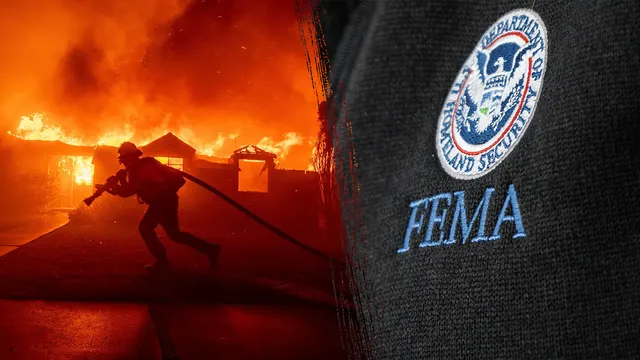
FEMA chief Cameron Hamilton fired for opposing agency dismantling
2025-05-09 13:03- Cameron Hamilton was fired from his position as the acting administrator of FEMA shortly after opposing its proposed elimination during congressional testimony.
- Homeland Security Secretary Kristi Noem supported the notion to dismantle the agency and appointed David Richardson as the new acting administrator.
- Hamilton's removal raises concerns about FEMA's future effectiveness in natural disaster responses as the Atlantic hurricane season approaches.
Express your sentiment!
Insights
In the United States, the acting administrator of the Federal Emergency Management Agency (FEMA), Cameron Hamilton, was terminated from his position on May 7, 2025, following a congressional testimony that showcased his support for the agency's existence. During a hearing before a House Appropriations subcommittee, Hamilton argued against the proposed disbandment of FEMA, coining it detrimental to the American populace. His termination was ordered by Homeland Security Secretary Kristi Noem, who previously had suggested that FEMA should be eliminated in its current form. The situation surrounding FEMA has become increasingly precarious in recent months, with President Donald Trump proposing the concept of dismantling the agency, a notion that Noem reinforced. Hamilton's dismissal was particularly notable as it occurred just a day after he had openly advocated for the agency amidst heightened scrutiny and uncertainty regarding its future. Despite acknowledging areas of improvement needed for FEMA, his stance during the testimony seemed to directly contradict the administration’s push for reform. David Richardson, previously serving as the assistant secretary for the Department of Homeland Security's countering weapons of mass destruction office, was named Hamilton's replacement. This shift in leadership reflects the administration's ongoing efforts to streamline and possibly reshape emergency management practices at the federal level. Concerns about the capability and effectiveness of FEMA are compounded by the impending Atlantic hurricane season, which begins on June 1 and is expected to be an active season according to forecasts. The firing of Cameron Hamilton has drawn attention to the contentious relationship between federal emergency response strategies and the current administration's budgetary and operational ethos. How this decision will affect the overall structure and effectiveness of FEMA in responding to natural disasters remains to be seen, especially with the background of an administration that has raised questions about the agency's relevance. Hamilton's removal, particularly following his outspoken defense of FEMA, signals a significant shift that could have profound implications for the way emergency management is approached in the United States.
Contexts
The Federal Emergency Management Agency (FEMA) plays a critical role in coordinating the federal government's response to natural disasters and emergencies. However, FEMA is currently facing several significant challenges that impact its ability to effectively manage disaster response and recovery efforts. One major challenge is the increasing frequency and severity of natural disasters related to climate change, such as hurricanes, floods, wildfires, and storms. These disasters not only strain FEMA's resources but also complicate recovery efforts due to the growing number of affected communities. As climate-related events are expected to continue escalating, FEMA must adapt its strategies to efficiently allocate resources and provide timely assistance to those in need. Another prominent challenge is the ongoing need for enhanced coordination between federal, state, and local agencies during disaster response operations. Disparate systems and procedures can lead to confusion, delays, and inefficiencies. Improved communication is essential for an effective disaster response, yet there are often issues with interoperability between different jurisdictions and agencies. When responding to emergencies, FEMA must ensure that it collaborates seamlessly with local authorities and other federal entities to streamline operations and optimize resource deployment. Additionally, FEMA faces internal challenges concerning workforce capacity and training. The agency has experienced fluctuations in staff levels and expertise, which can directly affect its operational efficiency. As the demand for FEMA's services rises, the necessity for a well-trained and adequately sized workforce becomes critical. Investing in employee training and retention strategies is essential to maintain a responsive and knowledgeable disaster management team. Furthermore, as new technologies and methodologies emerge, continuous professional development is needed to ensure that FEMA staff remains competent in their roles. Lastly, public perceptions and trust in FEMA's effectiveness have been challenged by past disaster responses, sometimes leading to skepticism about the agency's ability to provide timely and adequate support. Building public trust requires transparency in operations, effective communication, and demonstrable improvements in disaster readiness and response. Engaging with local communities and incorporating their feedback into planning and response strategies can help foster a more positive relationship, ultimately strengthening FEMA's position as a leader in emergency management. Addressing these multifaceted challenges is crucial for FEMA to fulfill its mission successfully and adapt to the needs of a changing environment.